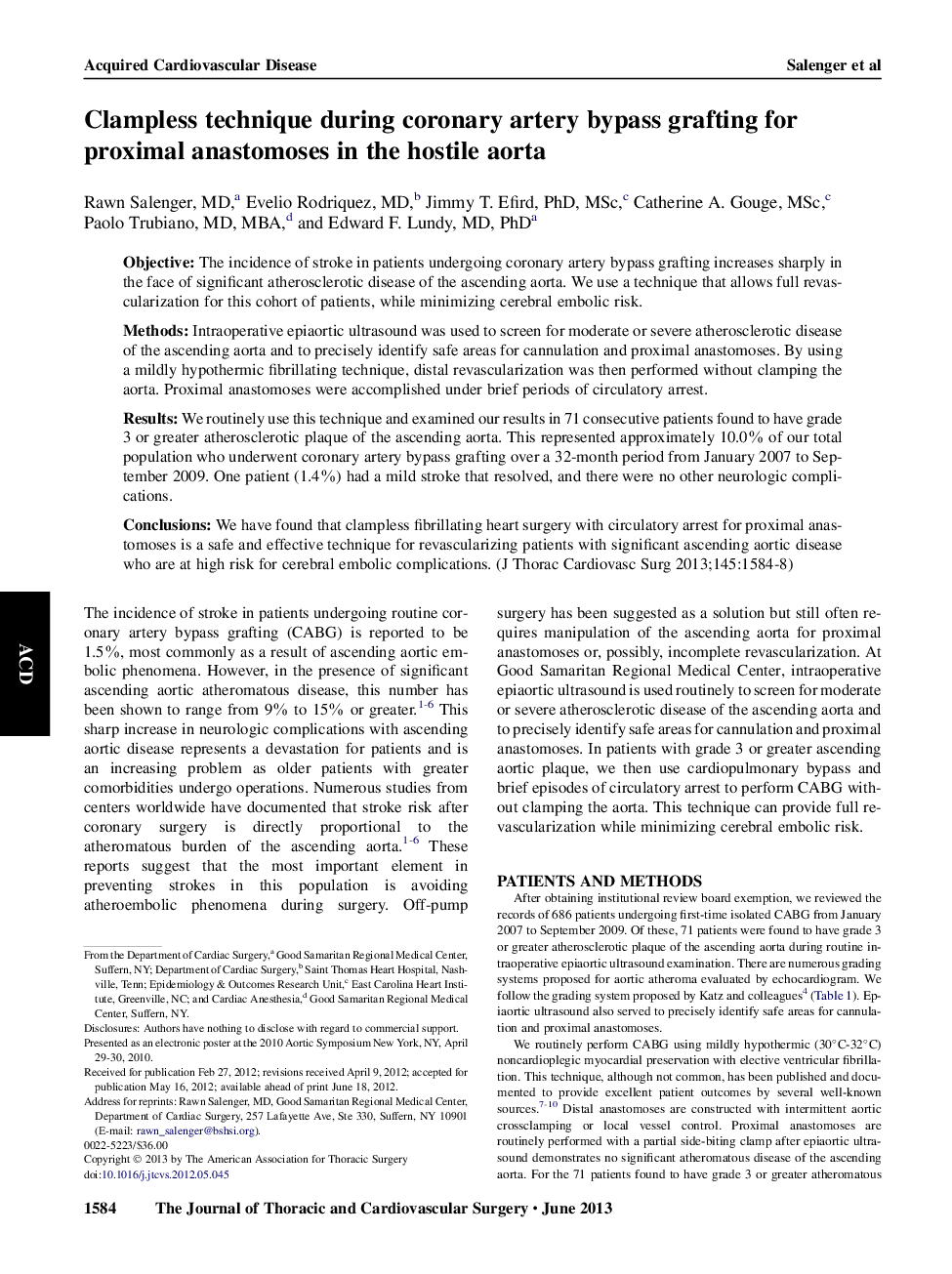| Article ID | Journal | Published Year | Pages | File Type |
|---|---|---|---|---|
| 2981210 | The Journal of Thoracic and Cardiovascular Surgery | 2013 | 5 Pages |
ObjectiveThe incidence of stroke in patients undergoing coronary artery bypass grafting increases sharply in the face of significant atherosclerotic disease of the ascending aorta. We use a technique that allows full revascularization for this cohort of patients, while minimizing cerebral embolic risk.MethodsIntraoperative epiaortic ultrasound was used to screen for moderate or severe atherosclerotic disease of the ascending aorta and to precisely identify safe areas for cannulation and proximal anastomoses. By using a mildly hypothermic fibrillating technique, distal revascularization was then performed without clamping the aorta. Proximal anastomoses were accomplished under brief periods of circulatory arrest.ResultsWe routinely use this technique and examined our results in 71 consecutive patients found to have grade 3 or greater atherosclerotic plaque of the ascending aorta. This represented approximately 10.0% of our total population who underwent coronary artery bypass grafting over a 32-month period from January 2007 to September 2009. One patient (1.4%) had a mild stroke that resolved, and there were no other neurologic complications.ConclusionsWe have found that clampless fibrillating heart surgery with circulatory arrest for proximal anastomoses is a safe and effective technique for revascularizing patients with significant ascending aortic disease who are at high risk for cerebral embolic complications.
